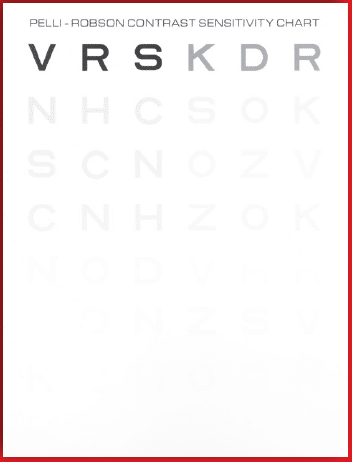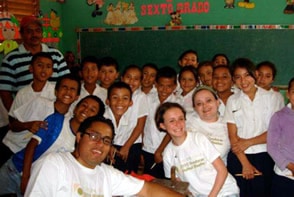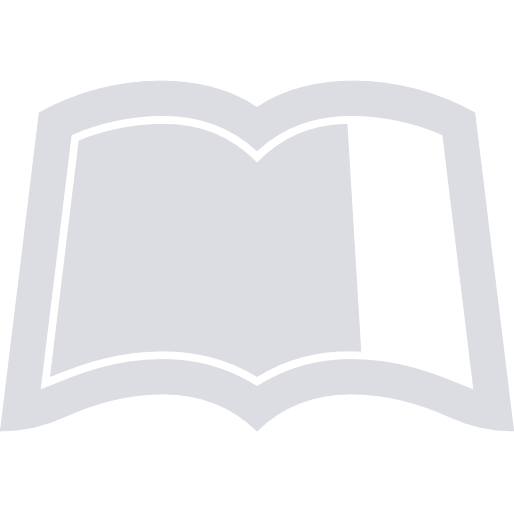
Precision Vision Assists the Honduras Medical Mission 2010 – Precision Vision
IN THE NEWS
Precision Vision has an important goal – to assist eye care professional and patients in need of high quality eye care by producing eye care products that exceed all expectations. We’re here to help, and that is why we’re thrilled to report on the success of the Central Americal Relief Effort in Honduras this year, which we happily support with product contributions. We’re proud to do our part.
Precision Vision Assists the Honduras Medical Mission 2010
“Thank you to all who donated money, supplies and their time to make this mission even more successful than last year. The van almost tipped over, but we managed to push it up again.
My rash is getting better. Amber can almost put weight on her leg again Ariel’s jelly fish sting is healing. So far the trip is amazing! The important thing is we have helped hundreds of children and adults.” – Noelle S. Matta CO, CRC, COT, Orthoptist
Precision Vision’s Contribution
Each year, specially trained eye care professionals join forces with the Central American Relief Effort to screen, examine and perform vision screenings and Ophthalmic surgeries in Honduras.
This year, specialists saw more than 1600 patients and made a powerful mark on vision care for the Honduran people.
Precision Vision was both proud and happy to donate vision care testing tools to assist in the effort. We provided various charts and vision testing tools and helped make their yearly visit a great success. Everyone involved did a phenomenal job, and we’re elated that we can a part of such a noble mission.
| By the Numbers |
| Total seen: 1,677+ Children: 1,195+ Adults: 482+Glasses dispensed: 265+ Children: 60+ Adults: 205+Surgery referrals: 80+ Children: 6+ Adults 72+ |
In Noelle’s Words
March 13, 2010: Most of us arrived in Tegusigalpa today, with the exception of Elise whose plane was canceled. Ryan arrived without luggage but everything else went smoothly. We took a tour of the hospital to see where the water filtration systems Jillian raised money to purchased would be placed. We ended our day by traveling to Pespire and having an amazing dinner with the dental team also on a medical mission from Lancaster PA. We travel with 11 pieces of luggage filled with supplies including eye glasses, eye drops, a photoscreener and other ophthalmic equipment.

March 15, 2010: After a relaxing Sunday at the beach it is time to get to work. We split our group in 2. In the morning Noelle, Rosie and Jillian went to a local school (Republica de Venezuela) and screened 210 children in the morning and returned to the San Marcos clinic in the afternoon. Children were also bused in from the Republic of Guatemala school to the clinic for screenings and exams. The rest of the team saw adults and children in the clinic from about 8am till 6pm. We arranged for 3 patients to travel to the capital to have surgery with David on Thursday.
March 16, 2010: Our team again split into 2 groups. One group stayed behind in San Marcos to see some of the school screening failures and adults from the day before and the rest traveled to Presentacion Centeno school in Duyure. This location was a 90 minute drive on rough dirt roads but well worth it as this was the first time they had access to eye care. We were lucky enough to encounter a peace corps volunteer living in the area who helped us by translating which allowed us to see so many more patients. One girl in San Marcos with various craniofacial issues, underdeveloped ears and a big eye drift was identified as needing surgery and we set up up for Thursday. We had dinner with some of our recently identified surgery patients and they traveled back with us from San Marcos to Pespire.
March 17, 2010: Elise and Ryan were gracious enough to share a hotel room with 2 of our surgery patients. This morning we put them on a bus headed to the capital for anesthesia clearance. We then visited three schools including Gustavo Simon Nunez school and El Coyolito school near Pespire. One school was up some rough terrain and only 3 of us could get there via 4-wheel drive. This school had never had access to eye care before we arrived. It was a more challenging school as they had no running water (something we are getting used to) and no electricity. We ran into some more electrical problems today with our equipment overheating and difficulty finding an actual outlet in a school with “electricity”. There is an obvious need to look into bringing our own generator in the future.
March 18, 2010: Today David and Elise are in Tegucigalpa for surgery while the rest of us visit the Francisco Morazan school in San Jose. The mayor was there to greet us and word quickly spread through out the town. A local kindergarten school called and asked if we could also examine the children in their school and then soon adults were lining up. We identified only one child with significant strabismus however he was the mayors son and will be seen for a surgical evaluation next week. The greatest need we are finding is for reading glasses, as the local stores do not sell them and the patients otherwise have no access to this vital need. On our return home we stopped to look at some hammocks along the road and were greeted by children excited to see us again remembering us from when we examined them at their school earlier in the week.
March 19, 2010: Four members of our team remain in the field and travel to the Mary De Flores and Presentacion Centeno schools in Pespire. In these schools we found it challenging to make the classrooms dark enough for our photoscreening equipment to work. The weather was in the 90’s and it was very humid. At the first school, the teeth pulling station was set up directly next to our eye chart, but amazingly the children were still very cooperative. A lot of farmers started to come down the mountain in hopes of an getting an eye exam or to get reading glasses but unfortunately our personal and supplies were so depleted we were unable to help most of them on this trip. We ended the day setting up our equipment in the hotel lobby seeing 4 children related to one of our drivers, one little girl who will be scheduled for surgery for an eye cross.
How Can You Help?
Many people have asked how can they help. Here is a check list of ways you can get involved and make a difference in the lives of many. All donations are welcomed and encouraged. The total collection will be used to underwrite the cost of sending medical personal, needed equipment and supplies. Donations can be made by credit card on a secure website (indicate the donation is for the 2011 Family Eye Group Mission) or mailed directly to:
Central American Relief Efforts
Attn Family Eye Group 2011 Mission
2117 Saddleridge Road
Lancaster, Pennsylvania, 17601.
717.299.4942
PRODUCT PROFILE
DAMATO 30-Point Campimeter
This 30 point campimeter features black stimuli on a white background. This presentation helps keep the campimeter accurate during testing when controlled lighting is unavailable. Also, this campimeter features only 30 points making it quicker during testing, yet still highly accurate. The campimeter is great for testing large groups of patients or those that are uncooperative. Can be used to screen for visual field loss from glaucoma, macular degeneration and other vision problems.
Low Contrast Pocket Card
This low contrast pocket card has a letter size of 8M to .20M with Acuity range 20/400, 6/120 to 20/10, 6/3 equiv. Front side 10% contrast featuring traditional Sloan optotypes that follow a “ETDRS 2000 Series” format including a combination of Charts 1 and 2. Near Point card uses Logarithmic acuity and includes distance equivalents in both meters and feet. Back side 10% contrast. 40 cm (16 in.) featuring continouse text format. This format helps to simulate everyday activities such as reading. This simulation leads to better testing of the patient and helps identify near vision problems that interfere with normal activities. Protective coating allows washing or cleaning with alcohol without any damage to chart faces. Pocket Test is useful to quickly screen for near vision deficiencies in any situation. This Continuous Text test is great for testing everyday reading and vision in patients. Also Available in Spanish, French, and German.
Translucent Occluder
Unlike many other eye occluders, this occluder is translucent and allows for better diagnosis of exams. The unique coating on both sides effectively prevents the patient from seeing through, yet allows the doctor to observe eye movements clearly. View both eyes while testing instead of only one, helps to expand the information gathered during general clinical exams. This translucent occluder is also very durable and can be cleaned for multiple exams.
SEE PV
Upcoming Meetings
Visit Precision Vision at the following tradeshows. If you are attending one of these tradeshows and want to avoid unnecessary shipping costs and delays, we’d be happy to bring small portable products to the meeting. Place your order online or call us at 800-772-9211. Just be sure to tell us which tradeshow to hold the products for.

Share Your Stories With Us!
Precision Vision® wants to hear your stories. Tell us how you are impacting the industry. Do you have an interesting story to share about a Precision Vision® product? Contact us and we may use it in a future newsletter.





